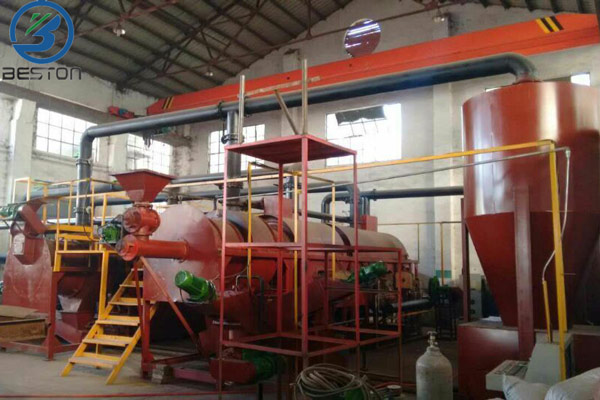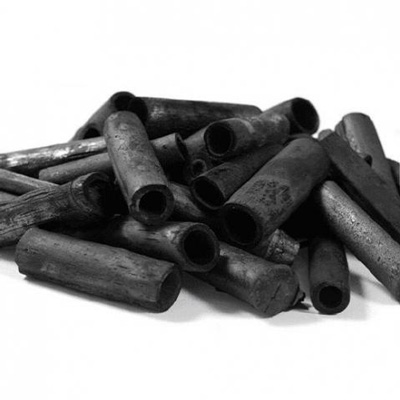Carbonized bamboo is a common material used in building, primarily for furniture and flooring, and is softer and darker in color than natural bamboo. The color of carbonized bamboo is sometimes used for decorative purposes and is often mixed with natural colored bamboo. While natural bamboo has a pale, creamy color (blond) carbonized bamboo has a more amber tone to deeper shades of brown. Here is an effect way: bamboo charcoal machine.
Carbonized bamboo is considered to be an environmentally friendly building material as it matures in approximately three years and regenerates without having to be replanted, compared to an oak tree that takes 120 years to mature and needs to be replanted. The charcoal manufacturing process has a softening effect of up to 20% – 30% on bamboo and the fibers need to be treated for strength and endurance. When compressed and formed into panels, it compares favorably with certain hardwoods for durability, however, it is mainly used in homes for flooring or furniture and is not suitable for high-traffic areas like public buildings.

Carbonization of Bamboo
Cooking the bamboo involves pressure heating the sugar in the bamboo in a carbonizer which results in a dark amber color that may be variegated or fairly uniform. The color of carbonized bamboo comes naturally from its processing and is usually not stained. It is sometimes blended with lighter or darker carbonized bamboo, or mixed with natural color bamboo for decorative effects. The most common use for carbonized bamboo is flooring. In China, there are many biochar production equipment in Cote d’Ivoire. Choose the reliable one.
Although bamboo is often referred to as wood, it is technically a grass species that is extremely fast growing. Its relative abundance makes it cheaper to use for flooring than new hardwood. However, the quality, carbonization process, and import fees increase the cost. Choosing natural bamboo from sustainably harvested sources will also affect the cost of carbonized bamboo. Other variables that affect the cost depend on the type of material required, for example, strand, solid, or engineered bamboo, as well as the finish, professional installation, or custom made items.
Environmental Concerns
Bamboo is mostly used in natural habitats that are warm such as the tropical areas of Africa, Asia, and the Americas. Most bamboo used in the U.S. is grown in China. The increased popularity of bamboo for use in flooring and furniture has unfortunately created unhealthy environmental practices such as forest clearing to grow and harvest more bamboo. This causes loss of biodiversity and soil erosion. Although fertilizers and pesticides are not used to grow bamboo, they are often used in some areas to boost production. The glue used to install bamboo panels may contain formaldehyde and if you care about the environment you may want to deal only with suppliers of eco-friendly bamboo, and installers that don’t use harmful substances to adhere the bamboo panels to the subfloor.

Care and Cleaning of Carbonized Bamboo
Dirt, excessive moisture, and scratches from high heeled shoes can all take the shine off carbonized flooring and furniture. Appropriate cleaning with a damp sponge or a mop without soaking the surface is best as all wood that is exposed to water will absorb moisture. Water should never be allowed to pool on the surface and spills should be mopped up immediately to prevent staining, or spoiling of decorative finishes. Scratches can be sanded and a protective sealer applied, and a UV protective finish will prevent fading of areas constantly exposed to direct sunlight.
